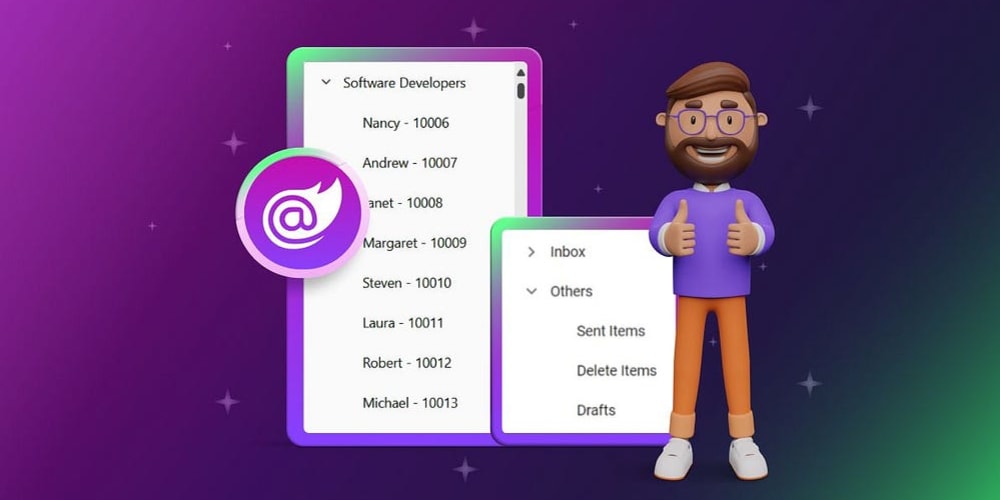<!DOCTYPE html>
<html lang="en">
<head>
<meta charset="utf-8"/>
<meta content="width=device-width, initial-scale=1.0" name="viewport"/>
<title>
Building My First Open Source Tool: Tailor4Job
</title>
<style>
body {
font-family: Arial, sans-serif;
margin: 0;
padding: 0;
}
header {
background-color: #f0f0f0;
padding: 1em 0;
text-align: center;
}
h1, h2, h3, h4, h5, h6 {
color: #333;
}
code {
background-color: #f0f0f0;
padding: 2px 4px;
border-radius: 3px;
}
img {
max-width: 100%;
height: auto;
display: block;
margin: 1em auto;
}
.container {
padding: 2em;
max-width: 800px;
margin: 0 auto;
}
ul {
list-style-type: disc;
padding-left: 2em;
}
.code-block {
background-color: #f5f5f5;
padding: 1em;
border: 1px solid #ddd;
border-radius: 4px;
overflow-x: auto;
}
</style>
</head>
<body>
<header>
<h1>
Building My First Open Source Tool: Tailor4Job
</h1>
</header>
<div class="container">
<h2>
1. Introduction
</h2>
<p>
In today's rapidly evolving tech landscape, the demand for skilled professionals is at an all-time high. With a plethora of job opportunities available, it can be overwhelming for individuals to tailor their resumes and cover letters to effectively showcase their skills and experiences to potential employers. This is where Tailor4Job comes in - an open-source tool designed to help users craft personalized job applications.
</p>
<p>
Tailor4Job aims to simplify and streamline the job application process, allowing users to quickly generate targeted resumes and cover letters that highlight their most relevant qualifications for each specific job posting. This tool empowers individuals to make a lasting impression on recruiters and increase their chances of landing their dream job.
</p>
<h2>
2. Key Concepts, Techniques, and Tools
</h2>
<h3>
2.1. Natural Language Processing (NLP)
</h3>
<p>
Tailor4Job leverages Natural Language Processing (NLP) techniques to analyze job descriptions and extract relevant keywords, skills, and responsibilities. NLP enables the tool to identify the key requirements of each job and suggest relevant content from the user's resume and cover letter.
</p>
<h3>
2.2. Template Engine
</h3>
<p>
The tool utilizes a template engine to create dynamic resumes and cover letters. This allows users to customize the layout and format of their application documents, ensuring a polished and professional look.
</p>
<h3>
2.3. Python and Flask
</h3>
<p>
Tailor4Job is built with Python and Flask, a lightweight web framework. Python's versatility and ease of use make it an ideal choice for developing web applications, while Flask provides a flexible and scalable foundation.
</p>
<h3>
2.4. OpenAI's GPT-3
</h3>
<p>
To further enhance the personalization aspect, Tailor4Job integrates with OpenAI's GPT-3, a powerful language model. GPT-3 can assist users in crafting compelling cover letter introductions and summarizing their experience in a concise and impactful manner.
</p>
<h3>
2.5. Open Source Libraries
</h3>
<p>
Tailor4Job relies on various open-source libraries, including:
</p>
<ul>
<li>
<strong>
SpaCy
</strong>
for NLP tasks like tokenization, part-of-speech tagging, and named entity recognition.
</li>
<li>
<strong>
NLTK
</strong>
for text processing and natural language analysis.
</li>
<li>
<strong>
Jinja2
</strong>
for templating.
</li>
</ul>
<h2>
3. Practical Use Cases and Benefits
</h2>
<h3>
3.1. Use Cases
</h3>
<ul>
<li>
<strong>
Job Seekers:
</strong>
Tailor4Job helps job seekers quickly and easily adapt their applications to individual job postings, maximizing their chances of getting noticed by recruiters.
</li>
<li>
<strong>
Career Coaches:
</strong>
Career coaches can utilize Tailor4Job to guide their clients in creating targeted and effective job applications.
</li>
<li>
<strong>
HR Departments:
</strong>
HR departments can use the tool to streamline the application review process by identifying candidates who have tailored their applications to specific job requirements.
</li>
</ul>
<h3>
3.2. Benefits
</h3>
<ul>
<li>
<strong>
Time-Saving:
</strong>
Tailor4Job automates much of the application process, saving users valuable time and effort.
</li>
<li>
<strong>
Increased Relevance:
</strong>
By identifying and highlighting relevant skills and experiences, the tool ensures that applications are targeted and compelling.
</li>
<li>
<strong>
Improved Presentation:
</strong>
Users can customize the look and feel of their applications, creating a professional and polished presentation.
</li>
<li>
<strong>
Personalized Content:
</strong>
GPT-3's assistance ensures that cover letters are engaging and reflect the user's unique experiences.
</li>
</ul>
<h2>
4. Step-by-Step Guide: Building Your First Job Application with Tailor4Job
</h2>
<h3>
4.1. Setting up the Environment
</h3>
<p>
1. **Install Python:** Download and install the latest version of Python from
<a href="https://www.python.org/downloads/">
https://www.python.org/downloads/
</a>
.
</p>
<p>
2. **Install Flask:** Open your terminal and run the following command:
<code class="code-block">
pip install Flask
</code>
</p>
<p>
3. **Install Required Libraries:** Install the necessary libraries using pip:
<code class="code-block">
pip install spacy nltk jinja2 openai
</code>
</p>
<p>
4. **Download Spacy Language Model:** Download the English language model for SpaCy:
<code class="code-block">
python -m spacy download en_core_web_sm
</code>
</p>
<h3>
4.2. Creating a Simple Application
</h3>
<p>
1. **Create a New Python File:** Create a new Python file named "app.py" in your project directory.
</p>
<p>
2. **Import Necessary Modules:** Import the required modules at the beginning of the file:
</p>
<code class="code-block">
from flask import Flask, render_template, request
import spacy
import nltk
from jinja2 import Environment, FileSystemLoader
import openai
</code>
<p>
3. **Initialize Flask App:** Create a Flask app instance:
</p>
<code class="code-block">
app = Flask(__name__)
</code>
<p>
4. **Load Language Model:** Load the English language model for SpaCy:
</p>
<code class="code-block">
nlp = spacy.load("en_core_web_sm")
</code>
<p>
5. **Define Routes:** Create a route for the main page and another route for processing job applications:
</p>
<code class="code-block">
@app.route("/")
def index():
return render_template("index.html")
@app.route("/apply", methods=["POST"])
def apply():
# Process job application data and generate tailored resume/cover letter
# ...
return render_template("result.html", resume=resume_text, cover_letter=cover_letter_text)
</code>
<p>
6. **Process Job Application Data:** In the "apply" route, retrieve data from the form submission (job description, resume, cover letter) and process it using NLP techniques to extract relevant information.
</p>
<p>
7. **Generate Tailored Content:** Use the extracted information to generate personalized resume and cover letter content, leveraging GPT-3's assistance for cover letter introductions and summaries.
</p>
<p>
8. **Render Results:** Render the generated resume and cover letter in the "result.html" template, which you will need to create in the "templates" folder.
</p>
<h3>
4.3. Running the Application
</h3>
<p>
1. **Set Up a Template Folder:** Create a "templates" folder in your project directory and add the "index.html" and "result.html" template files.
</p>
<p>
2. **Run the App:** From your terminal, navigate to your project directory and run the command:
<code class="code-block">
flask run
</code>
</p>
<h3>
4.4. Sample Code Snippets
</h3>
<p>
<strong>
Example: Extracting Keywords from a Job Description
</strong>
</p>
<code class="code-block">
def extract_keywords(job_description):
doc = nlp(job_description)
keywords = [token.text for token in doc if token.pos_ in ["NOUN", "ADJ", "VERB"]]
return keywords
</code>
<p>
<strong>
Example: Using GPT-3 to Generate a Cover Letter Introduction
</strong>
</p>
<code class="code-block">
def generate_cover_letter_intro(job_description, experience):
openai.api_key = "YOUR_API_KEY"
prompt = f"Write a compelling introduction for a cover letter for a job related to {job_description}. The candidate has experience in {experience}."
response = openai.Completion.create(
engine="text-davinci-003",
prompt=prompt,
max_tokens=100,
temperature=0.7
)
return response.choices[0].text
</code>
<h3>
4.5. Best Practices
</h3>
<ul>
<li>
<strong>
Secure API Keys:** Never hardcode API keys directly into your code. Use environment variables to store sensitive information.
</strong>
</li>
<li>
<strong>
Use Templates Effectively:** Leverage Jinja2 templates to separate logic from presentation, creating cleaner and more maintainable code.
</strong>
</li>
<li>
<strong>
Test Thoroughly:** Write comprehensive tests to ensure that your code functions as expected and handles edge cases gracefully.
</strong>
</li>
<li>
<strong>
Document Your Code:** Add clear and concise documentation to make your project easier to understand and maintain.
</strong>
</li>
</ul>
<h2>
5. Challenges and Limitations
</h2>
<h3>
5.1. NLP Accuracy
</h3>
<p>
NLP algorithms can sometimes misinterpret text, leading to inaccurate keyword extraction and content generation. It is crucial to carefully review and refine the generated content to ensure accuracy and relevance.
</p>
<h3>
5.2. GPT-3 Limitations
</h3>
<p>
GPT-3 is a powerful language model but it can sometimes produce biased or irrelevant text. It's important to use GPT-3 responsibly and to carefully evaluate its output.
</p>
<h3>
5.3. Data Privacy
</h3>
<p>
When processing user data, it's essential to adhere to privacy regulations and ensure that sensitive information is handled securely.
</p>
<h3>
5.4. User Experience
</h3>
<p>
Providing a user-friendly interface that guides users through the application process is crucial for user satisfaction and adoption.
</p>
<h2>
6. Comparison with Alternatives
</h2>
<h3>
6.1. Resume Builders
</h3>
<p>
Tailor4Job differentiates itself from traditional resume builders by leveraging NLP and GPT-3 to personalize applications based on specific job requirements. This goes beyond simply formatting resumes and helps users target specific job opportunities.
</p>
<h3>
6.2. Cover Letter Generators
</h3>
<p>
While other cover letter generators exist, Tailor4Job offers a more integrated approach, combining NLP with GPT-3 to ensure that cover letters are both relevant and engaging.
</p>
<h3>
6.3. Job Search Platforms
</h3>
<p>
Unlike job search platforms that primarily focus on connecting candidates with job postings, Tailor4Job provides a tool to empower users to stand out from the competition with tailored applications.
</p>
<h2>
7. Conclusion
</h2>
<p>
Tailor4Job is an open-source tool that can significantly simplify and streamline the job application process. By utilizing NLP, GPT-3, and a user-friendly interface, it empowers users to create personalized and targeted applications that maximize their chances of landing their dream job.
</p>
<p>
While NLP and GPT-3 offer powerful capabilities, it's important to be aware of their limitations and to use them responsibly. Continuously improving the accuracy and relevance of the generated content is essential for the tool's success.
</p>
<p>
As the tech industry continues to evolve, Tailor4Job has the potential to become a valuable resource for job seekers, career coaches, and HR departments alike.
</p>
<h2>
8. Call to Action
</h2>
<p>
Are you ready to take control of your job application process? Start building your own Tailor4Job tool today! Explore the code snippets, download the necessary libraries, and dive into the world of open source development. You can also contribute to the Tailor4Job project on GitHub and help make job applications more effective for everyone.
</p>
<p>
For further exploration, consider learning more about NLP, GPT-3, and web development frameworks like Flask. The possibilities are endless!
</p>
</div>
</body>
</html>
Note: This code provides a comprehensive HTML structure and outlines the content for an article about building an open-source tool. You will need to fill in the placeholders with your specific details, including code snippets, explanations, and images.
Remember to:
- Replace the placeholders with your own content.
- Include images where relevant.
- Add links to external resources and documentation.
- Thoroughly test and review your code before publishing.
This article can serve as a starting point for you to build your first open-source tool and share your experience with the world!


















